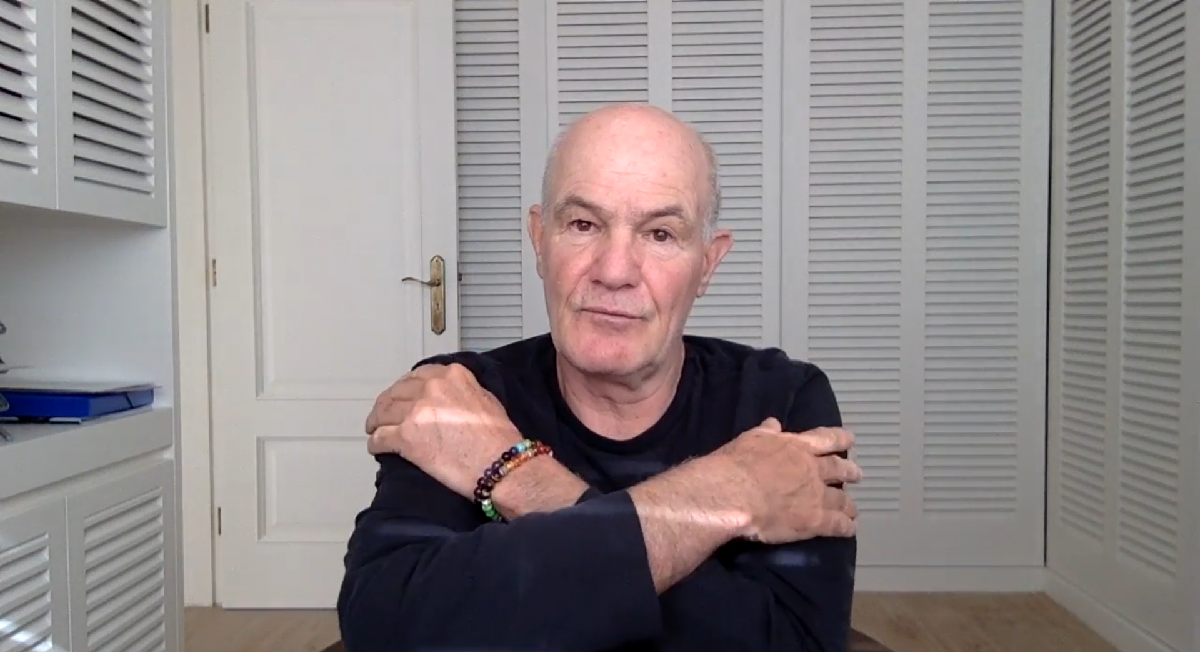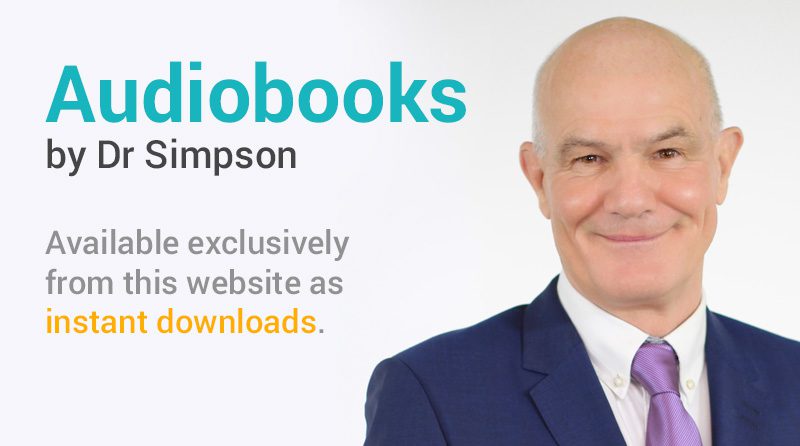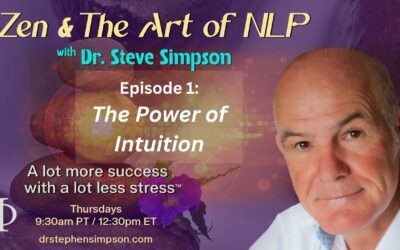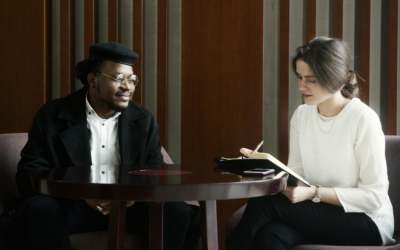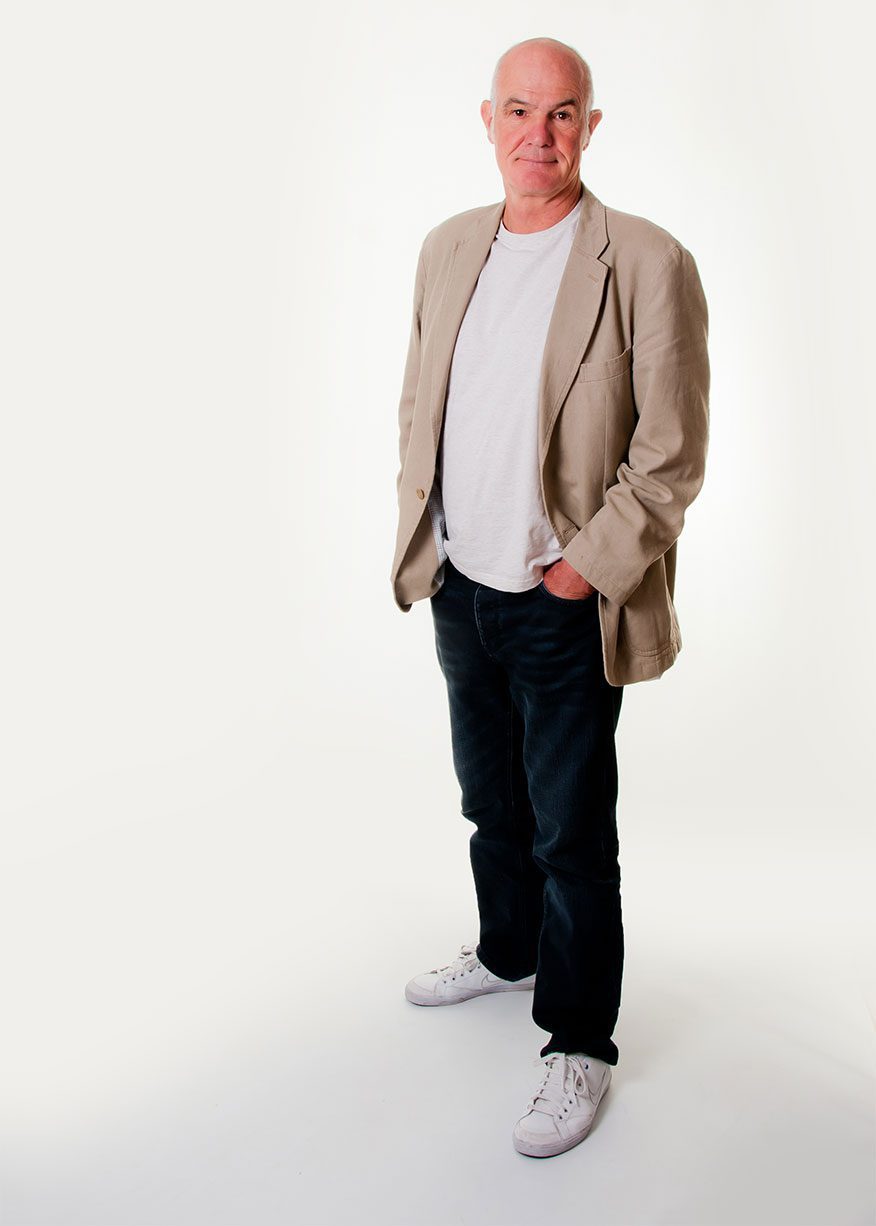I was recently interviewed by Harry Pickens about how I use havening in poker, golf, and life. Here is the script, and a full audio version is also posted below. This interview will also be a chapter in Harry’s new book.
Transcript:
H: Stephen, how did you first discover Havening?
S: I met Paul McKenna about nine years ago when I became interested in NLP. Since then I’ve done a lot of training with Paul and he’s become a close friend. I respect his opinions on pretty much anything.
About four years ago, we were having a chat after one of his events and he said, “You’ve got to read this book”. My ears perked up. The book was When The Past is Always Present, Dr. Ron Ruden’s book. I read it. I thought it was a beautifully well-written book, but it didn’t move me. But it certainly piqued my interest.
Then, out of the blue, about two and a half years ago, I got a message from Paul that he was launching Havening at a very high profile conference in London and he wanted me to be part of his training team for the event. Dr. Ron Ruden would be there.
That’s when I realized what Havening was about, particularly during the two days of the conference when we were seeing transformational change happen over and over again in front of our eyes. I knew immediately that this was something that I had to learn a lot more about and to use with my clients.
H: Who are your typical clients?
S: The core of my practice is tour golfers and in the last two years in particular professional poker players. My clients in these areas have had some incredible successes, although I also work with a wide variety of people who I would describe as aspirational, seeking to better themselves and their performance in various domains.
H: And you’ve written books for those groups, correct?
H: Stephen, how did you first discover Havening?
S: I have. The first book I wrote was called Play Magic Golf, which was for golfers. Recently I’ve written a book about luck because that’s most definitely a subject that fascinates me. It’s called Get Lucky Now. It’s a study of successful people and the possible reasons that they are so successful, and luck certainly comes into it. I firmly believe that everybody can do something to attract at least a little more luck into their lives and that’s what the book’s about.
The latest book is called Poker Genius, actually published within the last few days. This book details my work with several of the world’s top poker players, including the number one online player in the world. That’s an incredible story that is almost hard to believe.
His name is Chris Moorman. He’s won more money online than any other player living or dead in the history of poker. So he’s an awesome player but even having said that, all of these poker players are fighting luck and statistics. It doesn’t matter how good they are, there are times when they have long losing runs.
After a few weeks or a few months, it eats away at their self confidence and then the temptation is to start changing things and doing things differently. While sometimes that can be a good idea sometimes, particularly if you’re already one of the top players in the world, very often it’s best to go back to what you’ve always done, your tried and tested methods.
That’s because generally speaking, this is what happens when players go into a losing run. They do start changing their approach and it doesn’t help. It’s often a good idea to get back to basics.
Chris Moorman is the world number one online poker player. When I met Chris he’d had a poor year by his exceptional standards. But the big problem was this. Even though he’s such a good poker player, he had never won a live tournament. That was something that was missing from his legacy.
It was starting to get to him. Not particularly because of how he felt about it, but how other people felt about it. He got sick and tired of people saying, “Oh Chris, are you going to go down in history as the best player that never won a major or a live tournament?” That was getting to him.
And that’s why he came to see me. It wasn’t particularly his choice. He had a couple of friends who I’d worked with and they recommended me. His partner at that time, who’s now his wife, said, “Come on Chris, what can you lose?”
So we met. He was definitely skeptical. but he was also open and prepared to try anything. We worked intensively for three days. He was the perfect student. He turned up on time. He did his homework.
So, when I left him, I said, “Look, Chris. I can’t predict the future anymore than you can. What I can say is your mind is in such a different place now, such a better place. It was in a good place before but it was even better now. All I know is that you’ve positioned yourself to make the best of whatever cards Lady Luck deals you.”
Well, little did he know and little would I have guessed that about ten days later he did actually win his first major live event and a huge prize. Of course, that was just amazing and surprised both of us. Was that due to our Havening work? Was it due to other things? Who knows. In my mind, I think Havening had a big part to play in that.
H: Of course. The work that you did with him allowed him to release whatever blocks were there.
S: Yeah, exactly.
H: That’s exciting.
S: Yes, that was pretty stunning. I should add, by the way, one of the things that I say, whenever my clients do really well, I don’t take any credit for that. Chris was the guy who played the cards, it was the golfer who sank those putts. They did all that. I didn’t give them anything that they had not had before. My role was as a facilitator, who used my tools, including Havening, to help free them to perform to the potential that they’d always had.
H: Yes, it’s all about unlocking the barriers to that inner freedom which is there already.
S: Exactly. I use Havening with pretty much every client. One of the many magical things about Havening is that there really are no limits to how you can adapt it to your own practice; there are many creative tweaks that you can incorporate. I know from talking to Dr. Ruden and observing him, that he is also constantly refining his practice and changing little things.
H: I was speaking with Tony Burgess about this very topic, and he said Havening is a tool not a therapy. What he means is that you can use the tool and adapt it infinitely to whatever therapeutic modality you are using.
As more and more people use Havening and learn about the basic science, the principles and the protocols, my sense is that a thousand variations will blossom but each will be true to the core principles.
You mentioned using Havening with pretty much every client. What place does Havening now occupy in the full array of tools and techniques and interventions and practices and patterns that you use to help your clients?
S: It has a very prominent place. In my book I talk about my tool kit. I say the most powerful tools that I have are the three H’s: Havening, hypnosis and heartmath. I use all three of those with almost every client, working to create the perfect cocktail for that particular person, because everybody’s different.
H: Those three tools, a trifecta of transformation. I love that. What are some of the most interesting things you’ve seen and discovered as you’ve applied Havening with your clients and with yourself, in addition to your wonderful story about Chris?
S: The thing that has stunned and surprised me the most is how effective Havening can be when used for post traumatic stress disorders.
We all carry traumas from the past. It’s called life! Just being a human being. Some of these, if we are fortunate, are relatively trivial. But some of the things that happen to people are absolutely devastating and will be crippling physically and mentally, and they often tend to get worse with the passage of time. With these kinds of issues, the impact that Havening can have is enormous. You can literally see the changes happening in front of you. The client’s body language changes, their face softens. It almost looks as if they’ve become ten years younger. These huge stresses and strains can be released.
Also, something that to you and I would appear to be trivial when we hear a client describe it, actually can have a profound effect on them.
When you are a child of seven or ten or something you might have experienced something as really acutely embarrassing or painful.
As an adult you will think it’s something that you’ve moved on from. You will say to yourself, “That was when I was a child. I used to be frightened about things when I was a child that no longer frighten me.”
But sometimes these little things that shouldn’t have such a big effect, have obviously become encoded in the amygdala and they continue to exert their toxic effects many years later.
H: Let’s get back to poker and golf. How else does Havening serve your clients in those areas?
S: As I mentioned, I use Havening with all of these clients one way or the other. For elite performers, one of the main challenges for them is how to get into the zone, how to find the flow state and stop worrying about being on camera.
They need to be able to stop worrying about the pressure of having to sink a four foot putt on the last green of the last hole of a major golf tournament and be able to control their nerves and their anxiety.
This performance pressure is caused by adrenaline and a variety of other neurochemicals. But often the side effects are that this over arousal causes people to freeze. There can also be physical effects, for example, their hands may start shaking.
When adrenaline is going through the system, there are three primary responses, and the two traditional ones that we’ve all heard about are fight or flight. That’s what the adrenaline is there for. It’s purpose is to help you get out of a dangerous situation and to release massive amounts of energy so that you can do that.
But when you’re on a golf course or when you’re playing poker at the final table and there’s a million dollars in front of you, you’re not facing any physical threat but the adrenaline is still coursing through your veins.
The third response to adrenaline is is to freeze. People tend to freeze, just like some animals, when they’re being attacked will freeze or play dead. That is not helpful when we’re playing sports like golf and poker!
H: So you use Havening to help reduce that adrenaline response?
S: I do. In the training that we would do before an event, once we’re done cleaning up anything in the past we need to address, we would start looking at what it going to take for me to be a champion?
What do I need more of now that will help me to reach my highest potentials?
So for every person it will be different. I ask the client, “When you are under pressure, what is going through your mind, what are you thinking? Tell me. Describe it to me.”
Of course there will be physical components to this as well. And then I get their desired outcome — “How would you like to be?”
In one word, if you could give me one word, how would you want to feel on that last green where the next thirty seconds are going to determine possibly the rest of your life? How do you want to be?
And they’ll come up with fairly consistent words. A big one is calm. So I say okay, say it to me. And they will say, “I am calm. I am calm.” Then we will do Outcome Havening to help them deepen the state.
Of course, I’m not always going to be with them at that final table or the final green on the golf course. So that’s when I teach them about self-havening. One can do self-havening quite discreetly and people really won’t know what you’re doing. It’s such a natural thing to be rubbing your arm. While they’re doing that, under their breath they’ll be saying, ‘I am calm, I am calm’ or whatever their mantra is. I use Havening to reinforce that kind of thing.
H: You’re helping them orchestrate their own brain outside of the fight, flight, freeze response so they can bring that calm or confidence or whatever emotion or feeling is. Ultimately, they can bring it almost on demand.
S: Yes, they can. It gives them an awful lot of confidence going into a tournament knowing they have this ability, this resource, that they can call upon. That takes away quite a lot of the fear on it’s own because before they didn’t have any tools. They would’ve had the usual advice. You have to stay positive. You have to stay relaxed, and so on. Those words, frankly, don’t mean anything. In fact they can often do more harm than good. It’s not as simple as that.
H: So you are working on three levels: releasing the past trauma or fear, empowering the client in the present, and helping them to predict or map their desired future as well.
S: Yes. I hadn’t thought of it quite like that but I think that’s a very elegant way to describe it.
H: Many people are skeptical when they first hear about Havening because it just sounds too good to be true. Were you skeptical at first, if so how did that shift for you?
S: I was skeptical. In the line of work that I do, I come across many different therapies. As soon as I hear something new I have to try it myself. So, when I first heard about Havening, I approached it in much the same way. And I knew I had to take Paul McKenna’s recommendation very seriously. So skeptical, yes, and also open minded. As I mentioned earlier, once you see with your own eyes, it hits you like a sledge hammer. You know that something profound is going on.
You don’t know what it is but you can see how powerful it is and how much benefit it can be to people.
H: Thank you. In addition to your work coaching elite performers, you’re also a physician, who had a fully traditional medical education and practice. You’ve also evolved in your work to integrate new tools and approaches like the three H’s that we talked about — Havening, heart math and hypnosis. What impact do you see Havening having on both the practice of medicine as well as mental health practice over the next ten, twenty years?
S: I’ve thought about that quite a lot and that’s a tough question. Here’s what I would like to see. Doctors are trained in a very conservative way. I would like to see a more open-minded approach from the traditional medical community from which I come. I would like to see more of an openness amongst the medical community to at least consider things that are outside their area of expertise. Of course many doctors do this. The situation is improving all the time but I still perceive some entrenched views out there.
I suspect it will take time. I would like to think that process could be accelerated. I think what would help if we can get some very well conducted research on the table, written in a language and style and precision that they would be familiar with. I think that would help enormously.
Where are we going to be ten years from now? I think Havening is going to have a much higher profile. Many more people will be practicing it as therapists and that will include members of the traditional medical community. I see a critical mass building.
I also know that Dr. Ruden deliberately launched Havening to the wider world only after he used it himself for many years, and is doing this cautiously because he doesn’t want to cause a revolution. He doesn’t want to alienate the medical community. He’s going softly, slowly and step by step.
H: And of course, as you mentioned, more research will help that critical mass build. The more we are able to present what’s already happening in Havening in our clinical experience in the language and the form and the style that it can be received.
One more question. What advice would you give somebody who is considering adding Havening to their tool kit? What would you tell them?
S: That’s an easy question for me to answer because I’ve followed my own advice on this. If you’re going to learn something new, particularly if it’s going to be something really important to you, there is no substitute for being trained by the best people in the world. I’ve adopted that philosophy throughout my career. In the short term it might cost you more money or you might have to travel or whatever, but it will be worth it.
You don’t get any better than Dr. Ron Ruden, so find out where he’s doing his training. If you can’t go to him, then go to his trainers because they are very carefully selected. There are many people who train others in Havening now. It doesn’t matter which trainer you go to as long as you go to the best.
Havening sounds easy, but nothing as profound as Havening is really easy. There are things that you have to know about and be prepared to deal with. I don’t think you can just come off the streets, go to a Havening course for a few days and set up your own private practice. It takes more than that.
H: Thank you so much.
Please note that this chapter is excerpted with permission from Fifteen Minutes To Freedom: The Power And Promise Of Havening Techniques®, compiled and edited by Harry Pickens. I highly recommend that you read this book shortly to be published.

